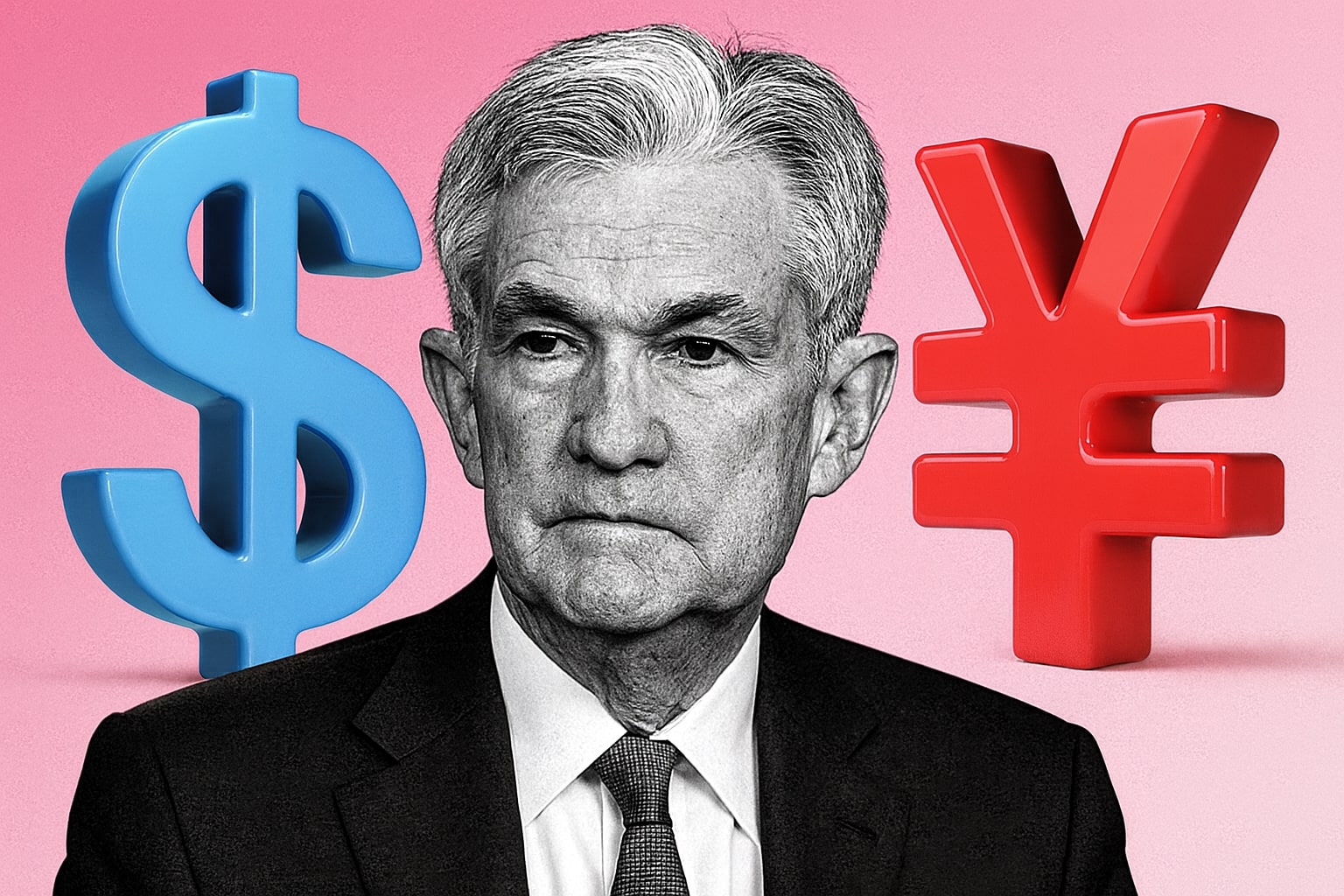
USD/JPY Price Forecast - Yen Reclaims 153.00 as Dollar Strengthens on Yield Stability and Japan Eyes ¥158–¥160 Line
With U.S. 10-year yields at 4.6%, resistance at 154.50, and intervention risk rising near ¥160, USD/JPY holds firm as traders bet on Fed tone and auction demand | That's TradingNEWS
USD/JPY: Rebound Above 153.00, But Intervention Risk Caps Upside
USD/JPY clawed back above 153.00 after a 100-pip, 0.68% slide, with buyers leaning on the 20-day setup and a calmer U.S. rates tape. Spot reclaimed 153.00 as U.S. 10-year Treasuries steadied near ~4.6%, re-tightening the familiar link between the pair and front-end U.S. yields. The immediate map is explicit: first support sits near 153.00 with a softer shelf at 152.80; lose 152.80 and the 20-day SMA near 152.52 becomes the magnet, while the October 29 pivot at 151.53 is the deeper line that would mark a trend-tone shift if broken. Topsides are equally clean: 154.00 gates the November 4 peak at 154.48; above it, the psychological 155.00 is next, with 156.50 the stretch level if momentum re-accelerates.
Rates Correlation Is The Driver: Watch The Front End, Not The Headlines
The rolling correlation between USD/JPY and Fed cut pricing has been running hot, with a strongly negative coefficient as deeper 2026 cuts get priced, the pair tends to slip; fewer cuts and firmer near-term policy stances buoy the dollar. With the U.S. data calendar thinned by the shutdown, speeches and Treasury supply matter more than usual. Auctions of 3s, 10s and 30s bracket the week; strong demand that presses yields lower would ordinarily nudge USD/JPY down, while a soft bid-to-cover that cheapens the curve tilts back toward 154–155. Risk appetite remains a secondary input: equities wobbled but the carry bid hasn’t vanished, keeping dips shallow as long as U.S.–Japan short-rate spreads refuse to compress decisively.
Japan Side Risks: JGB Supply, BOJ Signaling, And The Politically Sensitive Line
Tokyo’s 30-year JGB auction is a volatility wildcard; weak demand that cheapens the super-long end can bleed into broader term-premium dynamics, occasionally lifting USD/JPY via yield differentials. PPI later in the week offers a read on pipeline pressures that could color BOJ tolerance for gradual normalization talk. Messaging from BOJ board members has been sparse; any surprise hawkish tint—inflation persistence, wage setting, or guidance on balance-sheet rhythm—would lower topside pressure on USD/JPY. Prime Minister Takaichi’s growth-first fiscal stance argues for policy patience at the BOJ, but it also raises the stakes around FX optics if depreciation looks disorderly.
Intervention Thermometer: 155 Is Not A Tripwire—158–160 Is The Real Heat Zone
Market micro tells argue interventions are about speed and disorder, not round numbers. The last clean episode arrived north of 160 amid higher spot volatility. Today, spot vaulted back to ~153–154 with far calmer tape. Policy chatter implies tolerance up to 158 and, in a disorderly overshoot, 160, especially if speculative positioning and options vol flare. Political calculus matters: domestic assets are not flashing stress, public focus on the weak yen is not acute, and reserves are already earmarked for strategic commitments abroad—sustained yen-buying would carry an opportunity cost. Translation for traders: interventions are a tail risk below 158, a live risk into 158–160, and a base case only on a fast, volatile spike.
Momentum And Market Structure: RSI Support, Clean Levels, And A Narrow Runway
Momentum gauges improved with the reclaim of 153.00; RSI flipped back to neutral-positive on intraday frames while daily MACD remains heavy enough to keep rallies honest below 154.50. The market is respecting structure: 153.00 as intraday pivot, 154.00/154.48 as ceiling, 155.00 as headline risk zone. A daily close above 154.48 opens a controlled push to 155.00, where options gamma often caps follow-through absent a fresh yield impulse. Failures back through 152.80 typically test the 20-day at ~152.52; lose that on a closing basis and the path to 151.53 widens, inviting a thicker long liquidation.
Volatility And Positioning: Options Skew, IV Regime, And Strategy Translation
Implied volatility has oscillated in a compressed band—one-month tenor dipped sub-8% earlier in the week, then ticked higher toward ~11% as traders priced event risk around auctions, Fed speakers, and Japan supply. Skew remains intervention-aware: downside yen calls (USD/JPY puts) richen into 158–160 scenarios, while near-term topside remains rentable but capped by official risk. Tactically, bull call structures targeting 154.50–155.00 make sense above 153.00 when U.S. yields are stable to higher; below 152.80, put spreads to 151.50 carry favorable convexity. For volatility traders, short-dated straddles can still work when entered near 153.00 with tight risk controls, as micro-catalysts around auctions often break the intraday range even in a low-IV regime.
Read More
-
SCHD ETF Price at $27: Can SCHD’s 4% Yield and 9.15% Dividend Growth Beat High-Yield Covered Call ETFs?
15.12.2025 · TradingNEWS ArchiveStocks
-
XRP ETFs Close on $1B Inflows as XRPI at $10.92 and XRPR at $15.52 Hit 52-Week Lows
15.12.2025 · TradingNEWS ArchiveCrypto
-
Natural Gas Price Forecast: NG=F Holds the $4 Floor as Oversupply Clashes with 2026 LNG Demand
15.12.2025 · TradingNEWS ArchiveCommodities
-
USD/JPY Price Forecast - Dollar to Yen At 155: Yen Strength Builds As BoJ Hike And NFP Collide
15.12.2025 · TradingNEWS ArchiveForex
Cross-Market Checks: Equities Firm, Dollar Index Soft Patch, Carry Still Funded
Nikkei resilience and softer super-long JGB yields reduce the urgency for yen-supportive action, while a mildly softer Dollar Index intraday didn’t prevent USD/JPY from rebounding, underscoring that pair-specific rate spreads dominate the tape. Energy softness and steadier credit spreads have not dented the carry impulse. Into Veterans Day, thinner liquidity around U.S. cash Treasuries can exaggerate moves; use that to fade extremes at the aforementioned levels rather than chase mid-range bleeds.
Trading Plan With Numbers: Triggers, Invalidation, And Time Horizon
Above 153.00, buy-the-dip bias holds with a 154.00 break as the first trigger and 154.48 as confirmation; target 155.00 with a measured extension to 156.50 only if U.S. 10-year yields press higher and front-end pricing trims 2026 cuts. Below 152.80, flip neutral-to-bearish toward 152.52 and 151.53, invalidated on a swift reclaim of 153.20. Headline risk spikes on any MoF rhetoric above 155 and meaningfully so into 158; into those zones, reduce gross long USD/JPY, replace with optionality, or run collars to respect gap-risk.
Verdict
Hold. The range is defined and respected, the driver is the front end of U.S. rates, and intervention risk argues against chasing highs. Tactically bullish above 154.00/154.48 toward 155.00 when yields firm; tactically bearish below 152.80 toward 151.53 if auctions or Fed speak pull rates down.



















